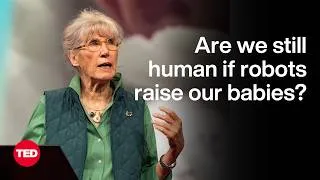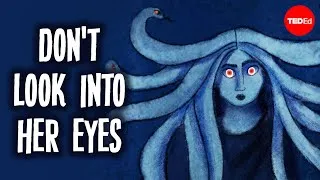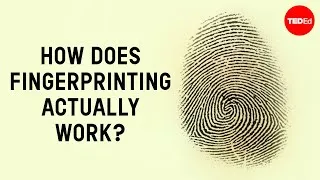请双击下面的英文字幕来播放视频。
翻译人员: jam Scofield
校对人员: Qiwen Lu
00:06
The city sky is, frankly, rather boring.
0
6926
3012
坦率地说 这个城市的天空相当无聊
00:09
If you look up at the patches of
murk between buildings,
1
9938
3050
如果你仰望楼与楼之间昏暗的斑点
00:12
you might be able to pick out
The Big Dipper,
2
12988
2260
你也许能够找出那北斗七星
00:15
or perhaps, Orion's Belt.
3
15248
2144
又或者是猎户座的区域
00:17
But hold on.
4
17392
739
但是 且慢
00:18
Look at that murky patch again
and hold our your thumb.
5
18131
3288
你再看一次那昏暗的斑点 然后举起你的拇指
00:21
How many stars do you think
are behind it?
6
21419
2640
你认为有多少星星在你拇指的背后呢
00:24
Ten, twenty? Guess again.
7
24059
2544
十?二十?再猜一次
00:26
If you looked at that
thumbnail-sized patch of sky
8
26603
2702
如果你用哈勃太空望远镜
00:29
with the Hubble Space Telescope,
9
29305
2101
观察那天空中拇指大小的斑点
00:31
instead of points of light,
you'd see smudges.
10
31406
2912
你看到的将不是光点 而是“浓烟”
00:34
These aren't stars.
11
34318
1555
它们不是星星
00:35
They're galaxies, just like our Milky Way.
12
35873
2984
它们是银河 就像我们的银河系
00:38
Cities of billions of stars,
13
38857
2262
如繁星般多的城市
00:41
and more than 1,000 of them
are hidden behind your thumb.
14
41119
5353
当中就有超过1000个城市隐藏我你的拇指后面
00:46
The universe is bigger than
you can see from the city,
15
46472
3120
宇宙比我们在城市中所能看到的更大
00:49
and even bigger than the starry sky
you can see from the countryside.
16
49592
4349
甚至比你在乡村中看到的星空还大
00:53
This is the universe as
astrophysicists see it,
17
53941
3835
它有着比地球是的沙粒还多的星星
00:57
with more stars than all the grains
of sand on Earth.
18
57776
5685
这就是作为一个天体物理学家所看到的宇宙
01:03
By staring up at the stars at night,
19
63461
1936
通过整晚盯着那些星星
01:05
you've taken part in the oldest science
in human history.
20
65397
3411
你已经参与进了人类历史上最古老的科学研究
01:08
The study of the heavens is older than
21
68808
1941
关于天的研究
01:10
navigation, agriculture, perhaps
even language itself.
22
70749
4094
远远早于关于航海和农业的研究 甚至比语言本身的研究还早
01:14
Yet unlike other sciences,
astronomy is purely observational.
23
74843
4656
然而 天文学不同于其它科学 它是纯粹的观察
01:19
We cannot control the parameters
of our experiments from lab benches.
24
79499
3665
我们无法坐在实验室的长凳上掌控实验的参数
01:23
Our best technology can send
man to the moon,
25
83164
2986
运用我们最好的科技 我们可以把人送上月球
01:26
and probes to the edge of
the solar system.
26
86150
2999
以及探索太阳系的边缘
01:29
But these distances are vanishingly small
27
89149
2359
但相比于裂口海湾恒星之间的距离
01:31
compared to the yawning gulfs
between stars.
28
91508
3303
这些距离是微乎其微的
01:34
So how can we know so much
about other galaxies,
29
94811
2453
所以 我们怎样才能更多地了解其它星系?
01:37
what they're made of, how many there are,
or that they're even there at all?
30
97264
4607
它们是由什么构成的 它们的数量是多少 又或者它们甚至不在那个地方
01:41
Well, we can start with the first thing we
see when we look up at night: the stars.
31
101871
4053
好了 当我们在夜空中仰望星星时 我们可以开始想的第一件事是
01:45
What we are trying to learn
is their properties.
32
105924
3237
我们正在努力研究的是它们的特性
01:49
What are they made of? How hot are they?
How massive? How old?
33
109161
4343
它们由什么构成?有多热?有多大?存在多久了?
01:53
How far are they from Earth?
34
113504
2378
它们离地球多远?
01:55
And believe it or not,
35
115882
1262
而且 不管你信不信
01:57
we can learn all of these things
simply from the light shining in the sky.
36
117144
5081
我们可以简单地从天空中的星光得知这些答案
02:02
We can decipher one kind of stellar message
by turning starlight into rainbows.
37
122225
4889
通过将星光变为彩虹 我们可以破译一种恒星的信息
02:07
When you look at a rainbow on Earth,
38
127114
1745
当你在地球上看彩虹
02:08
you're really looking at light
from our Sun
39
128859
2149
你看到的是来自太阳的光
02:11
being scattered through water droplets
in the atmosphere
40
131008
3301
光在大气中被水珠散射
02:14
into all the different wavelengths
that make it up.
41
134309
3211
形成各种不同的波长 从而产生彩虹
02:17
And we study the light from other stars,
42
137520
2133
我们通过学习来自其它恒星的光
02:19
we can create rainbows on demand
using not water droplets,
43
139653
4032
无需水珠我们也可以根据我们的要求来创造一条彩虹
02:23
but other specific instruments that
disperse light.
44
143685
3818
但其它有特效的仪器会把光分散
02:27
When we look at the scattered
light from our sun,
45
147503
2502
当我们在看从太阳射出的光线时
02:30
we see something strange:
dark lines in our rainbow.
46
150005
3461
我们注意到有一些奇怪的黑线出现在彩虹中
02:33
These lines are the characteristic
fingerprints of atoms.
47
153466
3624
这些线的原子特有的指纹
02:37
Each type of atom in the solar atmosphere
soaks up light at specific wavelengths,
48
157090
4997
太阳大气中的每一种原子在不同的波长中都吸收了光线
02:42
and the amount of absorption depends on
how many of these atoms there are.
49
162087
4489
而吸收的量则取决于那里有多少这种类型的原子
02:46
So by observing how much light is missing
at these characteristic wavelengths,
50
166576
4022
所以 通过观察在这些特定的波长中有多少光丢失了
02:50
we can tell not only what elements are
in the Sun's atmosphere,
51
170598
3314
我们不仅可以告诉你在太阳大气中有什么元素
02:53
but even their concentrations.
52
173912
2708
甚至能够告诉你它们的浓度
02:56
And the same idea can be applied to
study other stars.
53
176620
3149
同样的方法可以应用于研究其它恒星
02:59
Make a spectral rainbow,
see what's missing,
54
179769
2507
做一个彩虹的光谱 看看哪些元素消失了
03:02
and figure out which elements are present.
55
182276
2443
然后找出哪些元素还存在
03:04
Bingo. Now you know what stars
are made of.
56
184719
3635
你猜对了 现在你知道了恒星是由什么组成的了
03:08
But we aren't restricted to just
the wavelengths that our eyes perceive.
57
188354
3645
但我们的研究并不局限于人眼所能看见的波长
03:11
Consider radio waves.
58
191999
2052
想一想无线电波
03:14
Yes, they can bring the Billboard Top 100
to your car,
59
194051
3072
对的 它们可以把最受欢迎的前一百个广告带到你的车子里
03:17
but they can also travel almost
unimpeded through space.
60
197123
4191
同时它们也可以中几乎无阻地在空间中穿行
03:21
Because they've come so far,
61
201314
1514
因为它们已经走了很远了
03:22
radio waves can tell us the very
early history of the universe,
62
202828
3659
无线电波可以告诉我们关于那段宇宙在大爆炸后
03:26
from just a few thousand years
after The Big Bang.
63
206487
3970
几千年的早期的历史
03:30
We can also study the infrared light,
emitted by colder objects,
64
210457
3864
我们也可以研究由低温物体发出的红外光
03:34
like the gas and dust clouds in space,
65
214321
2720
比如太空中的气体和尘埃云
03:37
and the ultraviolet light from the hot
stars recently born from those clouds.
66
217041
5158
以及研究那些最近才从尘埃云中诞生的发热星体所发出的紫外光
03:42
Studying different wavelengths
not only gives us
67
222199
2672
通过研究不同的波长 我们不仅能够对任何单一事物
03:44
a more complete picture
of any single object
68
224871
2374
形成更全面的了解
03:47
but also different views of the universe.
69
227245
2697
也能多角度地了解宇宙
03:49
For this reason, astrophysicists use
several different kinds of telescopes
70
229942
4348
正因如此 天文学家们在太空中的巨型收音仪器、巨型银镜和太空卫星中
03:54
covering the spectrum from the infrared
to the ultraviolet to the X-ray,
71
234290
4621
使用了几种不同类型的望远镜其观察范围覆盖了红外线、紫外线以及X射线
03:58
from giant radio dishes to giant
silver mirrors to space satellites,
72
238911
4230
其观察范围覆盖了红外线、紫外线以及X射线
04:03
detecting light that would be otherwise
blocked by the Earth's atmosphere.
73
243141
4877
尽可能多地去检测它们 因为它们会被地球的大气层阻隔在外
04:08
Astrophysicists don't just see
74
248018
1955
天体物理学家不能只看到
04:09
the billions of stars among
the billions of galaxies in the universe.
75
249973
3412
宇宙数十亿星系中的十亿颗恒星
04:13
They hear, feel and sense them
through many channels,
76
253385
3838
通过不同的渠道 他们可以听得到、触得到以及感觉得到
04:17
each revealing a different story.
77
257223
2164
恒星们各自揭示出来的不同的故事
04:19
But it all begins with light,
the kind we can see and the kind we can't.
78
259387
4668
但这一切都源自光 包括我们看得见的和看不见的光
04:24
Want to know the secrets of the Universe?
79
264055
2642
你想知道宇宙的秘密吗?
04:26
Just follow the light.
80
266697
1617
只需跟着光走就行了
New videos
关于本网站
这个网站将向你介绍对学习英语有用的YouTube视频。你将看到来自世界各地的一流教师教授的英语课程。双击每个视频页面上显示的英文字幕,即可从那里播放视频。字幕会随着视频的播放而同步滚动。如果你有任何意见或要求,请使用此联系表与我们联系。







